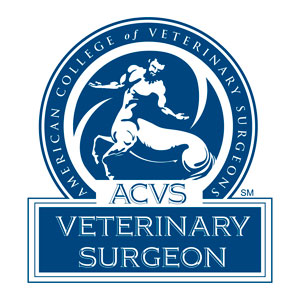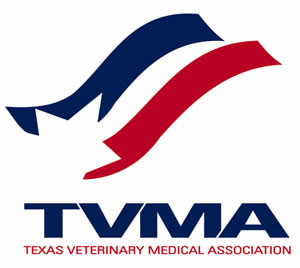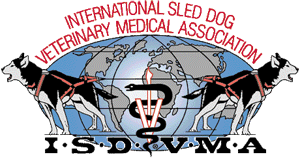Comparison of Total Hip Replacement (THR) to Femoral Head Ostectomy (FHO)
Total Hip Replacement surgery is performed to improve a dog’s quality of life suffering from hip pain by providing a pain-free joint with normal biomechanical function. Regardless of the problem causing the hip pain, treatment options range from conservative medical management to surgical treatment. Common options offered include total hip replacement (THR) or a femoral head ostectomy (FHO).




With current technology, prosthesis implants, instrumentation, and expertise, it is expected that over 95% of dogs with Total Hip Replacements can resume a pain-free active life without complications for the rest of their life. Total hip replacement should be offered as the primary recommendation over FHO with rare exceptions.
Objective evidence has been reported that dogs have significantly increased loading on the leg after total hip replacement. Based on published research, the following conclusions can be drawn.
• To the author’s knowledge, no literature is published in a referred journal that objectively documents that function of a dog’s rear leg after a FHO returns to a level comparable to normal, or to that following a THR.
• A dog’s hip joint is always severely biomechanically altered by the FHO procedure.


• A dog's leg is shortened to a variable degree as a result of the FHO procedure.
• Pain relief after a FHO is unpredictable.

• Rehabilitation time after a FHO is prolonged – especially compared to a THR.

• Small dogs and cats do not necessarily do better than large dogs after a FHO.

• Reported “Excellent” results after a FHO is relatively low (37% excellent and 26% good results reported by Gendreau and Cawley). “Excellent” results in some reports may include those dogs subjectively using the leg 75-100% of normal (not necessarily objectively equal or close to 100% of normal). This low percentage of limb function after a FHO is unacceptably low considering alternatives available.
• A veterinary surgeon’s primary surgical recommendation is a Total Hip Replacement to resolve hip pain and a return to normal function. A Femoral Head Ostectomy is a salvage procedure used as a last resort if a Total Hip Replacement is not feasible. Animal owner constraints may preclude THR surgery.


To help make decisions, Total Hip Replacement (THR) results must be compared to published reports of the Femoral Head Ostectomy (FHO) option. The following is detailed referenced information about Femoral Head Ostectomy in the veterinary literature to support the conclusions above.
Literature Evidence
Off and Matis published the only reference that could be found that based results on objective data. 132 dogs and 51 cats were examined using computerized gait analysis, kinematic measurements, radiographs, limb measurements, orthopedic examination, and owner questionnaire. They concluded that functional results were rated at good in 38% of the animals, satisfactory in 20%, and poor in 42%. Functional deficits in small, as well as large, breed dogs resulted from the FHO procedure.
1. Brinker states that an FHO is a nonreversible salvage procedure that is used to improve quality of life. A fibrous false joint forms and thus it does not maintain biomechanical function. There is a tendency of overuse the procedure for conditions that are repairable. Results vary considerably. A limp may remain because the leg is shortened by removal of the femoral head and neck, some loss of range of motion and a gait abnormality persists, and the thigh and hip muscles remain somewhat atrophied.
The FHO is suitable if it is acceptable to have compromised hip joint integrity, if lack of total pain relief is acceptable, or if there are financial constraints. The text continues stating that active use of the limb may take over 1 month and rehabilitation time of 6 months or more are not uncommon.
2. Berzon et.al. reported on the efficacy of FHO in 94 dogs and cats. The five most common indications for a FHO included degenerative joint disease, avascular necrosis of the femoral head, capital epiphyseal and femoral neck fracture, comminuted acetabular or pelvic fracture, and non-reducible or chronic coxofemoral luxation. All of these indications, with the possible exception of some acetabular fractures, are also indications for a THR. Acetabular fractures and pelvic fractures are generally repairable injuries.
A majority of the evaluations were done subjectively by the patient’s owners using a questionnaire. The results were considered “Excellent” if dogs had 75-100% (but not necessarily 100%) limb usage. Only 83% of the dogs were in the “Excellent” category. The other 17% had “Good” (51-75% limb function), “Fair” (26-50% limb function) or “Poor” (25 % limb function). It was acknowledged that the procedure may be performed where primary repair would be time-consuming, difficult, and economically prohibitive to the owner.
3. Duff and Campbell reported shortened limbs, restricted hip movement, and multiple other problems in a study of 267 FHO surgery patients. Difficulty jumping and climbing stairs was not uncommon. Muscle atrophy was reported in about 50% of the dogs and was a frequent finding by dog owners even 8 years after surgery. This atrophy can only indicate diminished limb function. Another common finding was difficulty jumping and climbing stairs. 20% of the dogs had hip pain when examined and the high incidence of pain was present during the first year after surgery. 40% of the dogs had reduced extension of the knee on the operated side. 51% of the dogs had reduced hip extension and 50% had bony and or soft tissue crepitation in the joint. There was a high incidence of pain in the first postoperative year. Patella instability was present 18% of the time and all were small breed dogs that had limb shortening. 50% of the dogs were walking “well” in 8-10 weeks and only 75% were running in 4-5 months. 69% of the dogs examined had limb shortening – especially in small breeds having surgery for avascular necrosis of the femoral head. 60% of the dogs showed prominence of the greater trochanter of the femur associated with true limb shortening. Only 50% of the dogs were walking “well” after 8-10 weeks and 75% by 3-4 months. 50% of the dogs were running well after 10-12 weeks and 75% were considered to be running well by 4-5 months.
4. Gendreau and Cawley reported on 35 FHO operations with the average follow-up interval of 3.1 years after surgery. Only 37.1% of the dogs had “Excellent” function, which was defined as no disability and inability to tell which limb had surgery. 25.7% had “Good” function (slight gait abnormality that may occasionally be more severe), 25.7% had “Fair” function (noticeable lameness or carrying the leg in adverse weather conditions or when running), and 11.4% had “Poor” function (severe gait impediment and carrying the leg most of the time). The conclusion was that the FHO does not always return function to the operated limb. The outcome appears to be less favorable in larger dogs, but some small dogs and a cat had poor or fair results. Young dogs did not have better results than older dogs.
5. Montgomery et. al. compared 3 different FHO surgical techniques. They concluded the specific techniques compared did not improve results between any of the groups for the percentage of leg use during normal activity, mean postoperative time until leg use, use of the leg or hopping while running, or lameness with exercise. The results were similar for large and small dogs, although the lameness tended to be milder in small dogs. Most of the small dogs were lap dogs with little opportunity for extreme exercise. The incidence of postoperative problems did not vary with increased body weight. Dogs (hunting dogs) whose intended use included vigorous exercise had a higher frequency of moderate to severe lameness.
6. Vasseur states in his publication that in mature dogs with severe degenerative joint disease involving the hip joints, total hip replacement restores hip function more consistently, and much more rapidly, than FHO. He recommends a vigorous rehabilitation program and maintenance of normal body weight to help restore function. Complications include shortening of the operated limb, with prominence of the greater trochanter, decreased range of motion in the pseudoarthrosis as compared to the normal hip, muscle atrophy, and impaired function. Occasional lameness is not unusual in larger dogs, and they may have difficulty jumping and climbing stairs. In addition, hunting dogs or dogs expected to perform other challenging physical tasks should not anticipate a complete return to normal function. Vasseur also states that it may take as long as 6 to 12 months for the animal to achieve an optimal result after FHO, with only fair return of function.
7. Lewis also evaluated different surgical techniques for performing the FHO surgery. An overview of the FHO procedure shortcomings was presented. He concluded that previously reported improved results with new techniques provided inconsistent results.
8. Grisneaux et.al. obtained objective data using force plate computerized gait analysis on limb function 3, 15, and 120 days after FHO with (for 21 days) and without the use of postoperative anti-inflammatory medication. The results show that operated dogs had significantly lower peak vertical, peak propulsive, and impulse propulsive forces on the limb and lower angles of hip joint abduction and extension than did normal dogs. Most of the limbs treated by FHO were unable to regain normal function and muscle mass after surgery. Body weight did not appear to be associated with the outcome of the FHO. The extent of muscle atrophy at the time of surgery correlated with prolonged recovery time. Dogs with the lesser trochanter preserved functioned better than those where it was partially or completely removed. Although all owners subjectively expressed complete satisfaction with results of surgery at the end of the study, operated dogs still had objectively significantly lower peak vertical, peak propulsive, and impulse propulsive forces and lower angles of hip joint abduction and extension than did control dogs at day 120. Owners noticed worsening of the lameness following cessation of anti-inflammatory medication. A conclusion states that active physical therapy may be a life-long necessity of dogs undergoing FHO. The hypothesis of the study was that promotion of active physical therapy during the first postoperative weeks combined with administration of an NSAID would minimize the reduction of mobility and, therefore, result in treated dogs having greater impulse propulsive forces and hip joint abduction and extension angles than dogs receiving a placebo. The hypothesis could not be demonstrated.
9. Plante et.al. reported force plate objective data comparing conservative management, FHO, and triple pelvic osteotomy treatment of hip dysplasia in immature dogs. The dogs in the FHO group showed ground reaction force abnormalities, most likely due to the absence of a coxofemoral joint. The FHO group had decreased peak propulsive and impulsive force compared to the triple pelvic osteotomy and control group.
10. Budsberg et.al. reported a study that compared the results of treating 16 dogs with bilateral coxofemoral osteoarthritis using total hip replacement on one side versus not on the other side. The ground reaction forces (weight bearing) indicated that dogs had significantly increased loading function of the treated side after unilateral total hip replacement. The data also indicated that force was transferred from the untreated side to the treated side during the study period. Loading rates increased indicating an increased willingness to load the treated hip over time. The study data provided substantial evidence of improvement in dogs after total hip replacement.
References:
1. Brinker W, Piermattei D, and Flo G: Handbook of Small Animal Orthopedics and Fracture Treatment, Second Edition, p371
2. Berzon JL, Howard PE, Covell SJ, et.al: Retrospective Study of the Efficacy of Femoral Head and Neck Excisions in 94 Dogs and Cats. Vet Surg, Vol 9 No3, p88-92, 1980
3. Duff R, Campbell JR: Long term results of excision Arthroplasty of the canine hip. Veterinary Record, 101, p181-184, 1977
4. Gendreau C, Cawley AJ: Excision of the femoral head and neck: the long term results of 35 operations: J Am Animal Hospital Assn, 13:605-608, 1977
5. Montgomery RD, Milton JL, Horne RD, et.al.: A retrospective comparison of three techniques for femoral head and neck excision in dogs, 16,6,423-426, 1987
6. Vasseur PB: Femoral Head and Neck Ostectomy, In Current Techniques in Small Animal Surgery, Ed 4, MJ Bojrab Editor, p1170-1173
7. Lewis D: Femoral head and neck excision and the controversy concerning adjunctive soft tissue interposition. Compendium on Cont Ed, Vol14, 11, 1463-1470, 1992
8. Grisneaux E, Dupuis J, Pibarot P, et.al.: Effects of postoperative administration of ketoprofen or carprofen on short- and long-term results of femoral head and neck excision in dogs. JAVMA, Vol 223, 7, p1006-1012, 2003
9. Plante J, Dupuis J, Beauregard G, et.al.: Long-term results of conservative treatment, excision arthroplasty and triple pelvic osteotomy for the treatment of hip dysplasia in the immature dog. VCOT, p130-135, 1997
10. Budsberg S, Chambers J, Van Lue S, Foutz, T, and Reece L: Prospective evaluation of ground reaction forces in dogs undergoing unilateral total hip replacement. AJVR, Vol 57:1781-1785, 1996












